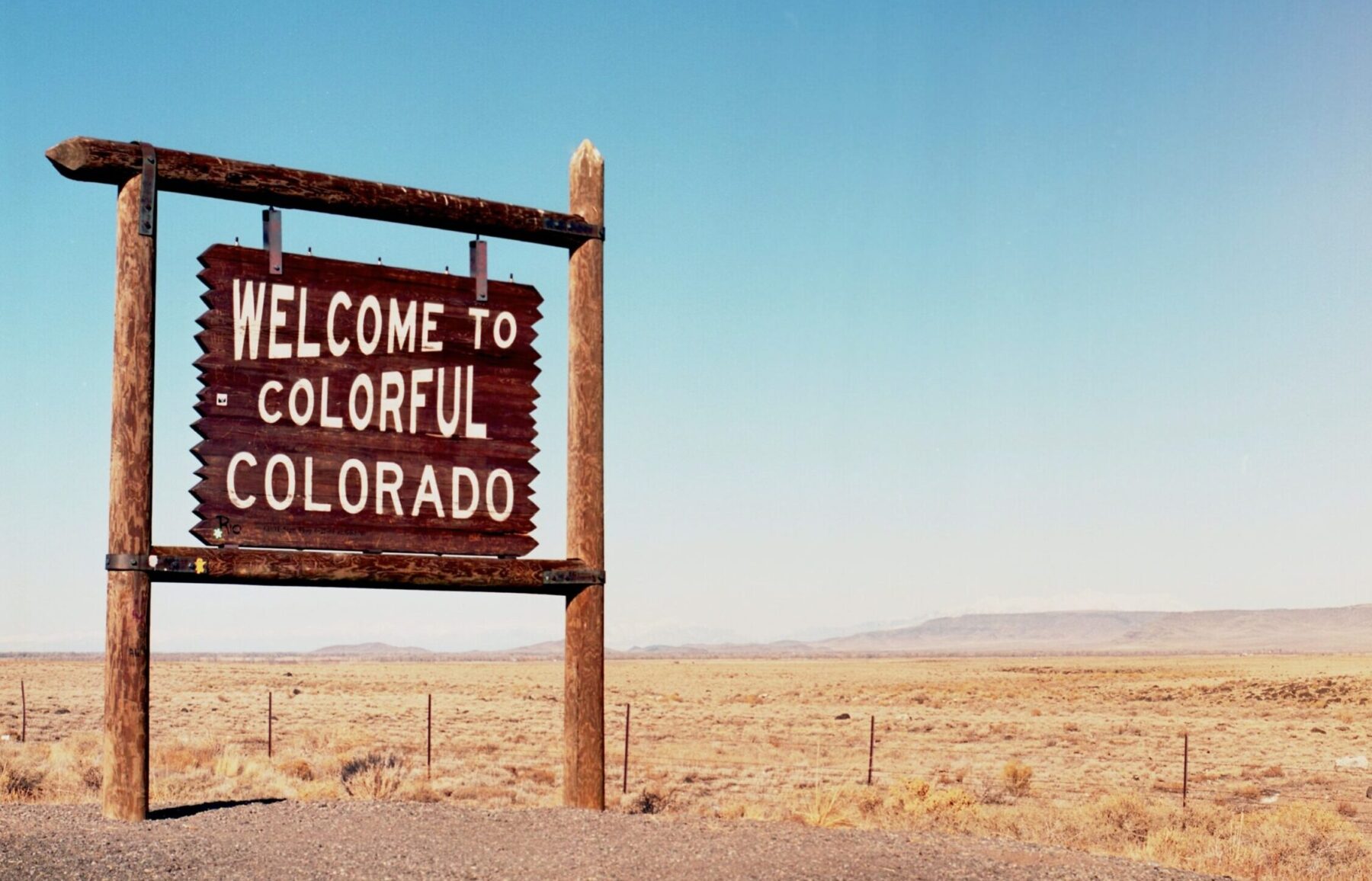Those of us lucky enough to live in Colorado know that the cost of living has skyrocketed in recent years. On Forbes’ list of the cities with the most significant cost of living increase, Colorado Springs ranked #1 and Denver was #16.
The cost of housing, insurance, and even a gallon of milk has increased year after year. While I’m no expert on housing or milk prices, I can offer some insight on the rising insurance costs.
Here are 5 key reasons insurance rates keep rising in Colorado:
1. The Increasing Population in Colorado
According to the Denver Post, the population in Colorado increased by approximately 80,000 people in 2018. That’s a significant increase in the number of cars on the road. More cars on the road means more accidents.

If you’ve lived in Colorado for at least 5 years, you know how bad the traffic has gotten. I remember when I first started driving back in 2007, it took me about 15 minutes to get from Westminster to Denver. Now if I have to go near Denver I add at least 45 minutes to my commute to be safe.
The time it takes to get around isn’t the only thing affected by the increasing population. When the roads become congested, the number of accidents tend to increase. The more accidents there are, the higher insurance premiums become for everyone.
You might wonder why your rates increased when you didn’t have an accident. The increasing frequency of accidents means that all drivers are at greater risk.
There isn’t much we can do about the increasing population, but there are a few things we can do to reduce accidents. We can limit trips, like stopping at the store on the way home rather than making a separate trip. We can also carpool to decrease the number of cars on the road.
Driving less can also help you qualify for a low mileage discount.
2. There’s More Technology in Vehicles
Many vehicles now have backup cameras, window sensors, side impact warning, and more. Some even have self-driving or self-parking features.
The technology makes vehicles safer, but also more expensive to repair. Now a simple fender bender with a newer vehicle is double the cost because there’s a sensor in the bumper or mirror.
Not only do the parts cost more, the actual labor is getting more expensive as well. In the past, if your vehicle had damage you could take it to your local repair shop and have it fixed by a mechanic. The more advanced the technology gets, the more specialized training mechanics.
At this point the safety features haven’t yet offset the increased cost of technology in cars.
3. Distracted Driving
Phone activity is one of the biggest culprits for distracted driving accidents. Other examples include eating, changing the radio, and talking to passengers.

The National Highway Traffic Safety Administration compares texting while driving 55 mph to “driving the length of an entire football field with your eyes closed.” You may only take your eyes off the road for 5 seconds, but that’s a long distance to travel without looking. The NHTSA found that distraction-affected crashes increased by 9.9% from 2018 to 2019.
When I’m stopped at a traffic light, I often look around at the drivers on either side of me. It’s scary to see how many drivers are either looking at their phones or distracted in some other way. Some might focus on driving once the light turns green, but many will remain distracted.
The more accidents there are, the more rates increase for everyone else. Even if only one person is at-fault for an accident, they aren’t the only one paying the premium for that loss.
Insurance is a shared risk, so we all pay into a big pool of money which is used to pay for damages caused by an accident. That spreads out the risk so that if you have a loss you’re not stuck paying the full cost out of pocket. As more of that pool of money gets paid out, more money need to be brought in.
When insurance companies pay out more than the premiums charged, they increase rates.
Do your part by focusing on the road. Tell your family members and friends not to text and drive. And don’t get in the car with a distracted driver. No text, phone call or snack is worth endangering someone’s safety.
If we all make an effort to pay more attention, we can reduce the number of accidents. Not only will that save lives, it’ll also lower insurance rates.
4. Lawsuits
Insurance is there to make you whole again in the event of a loss, not to better your financial situation. Some people, however, see a car accident as a way to make extra money. Unfortunately those people are driving car insurance rates up for everyone else.
There are commercials for personal injury attorneys everywhere- billboards, radio, on the TV. They promise they will get you hundreds of thousands of dollars if you were injured in an accident. But where does that money come from? Insurance premiums paid by you and me.
Insurance companies are in business to make a profit, just like any other company. So the more money they pay out, the more they have to increase rates to make up for it. When the average claim payout increases, the average premium increases accordingly.
5. Hail, Hail, and More Hail!
Colorado is one of the most hail-prone states in the country. That isn’t news to anyone that has lived here for more than a couple years.
One difference between Colorado and the other states in “Hail Alley” is the thin air at our elevation. Thinner air causes the hail to fall faster and hit harder. According to Meteorologist Paul Schlatter in a 9News article, the hail in Colorado can cause 8% more damage than hail that falls at sea level.
While there have been catastrophic hail storms for decades, the costs are increasing.
With more people moving to Colorado, there are more vehicles and homes. That means hail has more targets to hit when it falls. Simply put, the hail that used to hit the ground is now hitting cars and structures.
It doesn’t cost insurance companies any money when hail hits the ground. But when hail strikes homes, cars and businesses, insurance companies pay a lot of money. That’s why you pay for insurance, so when something like a hail storm happens you’re covered. But just like with distracted driving and lawsuits, that money has to come from somewhere. The more insurance companies pay, the more they charge.
These are just some of the costliest hail storms that have hit Colorado since 2009:
7/20/2009 Denver Metro- $767.6 Million
7/29/2009 Pueblo- $232.80 Million
7/13/2011 Colorado Front Range- $164.8 Million
6/6-7/2012 Colorado Front Range- $321.1 Million
9/29/14 Englewood- $213.3 Million
7/28/16 Colorado Springs- $352.8 Million
5/8/17 Golden- $2.3 Billion
6/13/18 Colorado Springs and Fountain- $169 Million
6/18-19/2018 Denver Metro and North Denver- $276.4 Million
You can’t avoid hail, but there are a few things you can do to prepare.
The best way to protect your vehicle from hail damage is to park in a garage or under a carport whenever possible. If you replace your roof, consider investing in materials that are hail resistive. Class 4 Hail Resistive Roofs may even get you a discount on your homeowners insurance.
When catastrophic hail storms hit, the area is likely to run out of rental cars. That drives up the cost of rental cars, often beyond the average policy limits. Purchasing higher limits for rental car coverage can help you avoid out-of-pocket expenses.
Many out-of-state roofing companies flock to the areas hit by hail. Those companies often charging inflated rates. Some even take your money and disappear without completing a single day of work.
If you do have hail damage on your home, follow these tips to find a roofing company you can trust:
- Only work with licensed, insured contractors.
- Get multiple estimates.
- Look at reviews or ask for references.
- Don’t pay in full or sign a document confirming completion until the work is done to your satisfaction.
- Review all documents and make sure you understand before signing ANYTHING.
If you get your renewal and have questions about the premium, call your agent before you jump ship. There is most likely a logical reason for a rate increase, even if you didn’t file a claim. It’s important to review your policy regularly to make sure everything is up to date and correct.
The rates for home and car insurance have increased all across the state of Colorado. Each person’s premiums may vary, but we are all in the same boat. Our rates are increasing for the same reasons.
There are some things you can do to lower your premium without sacrificing coverage.
Play your part in reducing accidents- avoid distracted driving and consolidate trips. If you have a newer vehicle use the technology to help with safe driving.
Sign up for telematics if your insurance carrier offers it. Many carriers will track your driving for a few months and offer you a rate based on your driving habits. Most people that take part end up paying less, though some may see an increase.
Increasing the deductibles on your home or car insurance can save money. Higher deductibles mean you are taking on more of the risk, which translates to lower prices.
Let your agent know if you get a new roof. The age of your roof has a big impact on your home insurance rate. Be sure to mention if your roof is hail resistive, as that can get you a discount.
- My boat is already paid for and rarely used. Should I still invest in boat insurance?
- Wondering If Homeowners Insurance Is A Smart Investment? What to Know
- Commercial Insurance: Security Upgrades For An Office Setting
- The Difference Between Classic, Historic, Vintage, and Restored Automobiles
- Recreational Drone Insurance: Flying with Peace of Mind
- My boat is already paid for and rarely used. Should I still invest in boat insurance?
- Wondering If Homeowners Insurance Is A Smart Investment? What to Know
- Commercial Insurance: Security Upgrades For An Office Setting
- The Difference Between Classic, Historic, Vintage, and Restored Automobiles
- Recreational Drone Insurance: Flying with Peace of Mind























